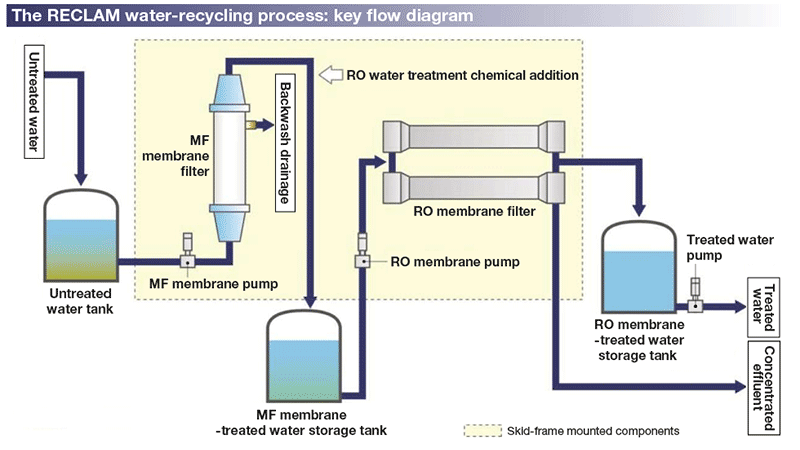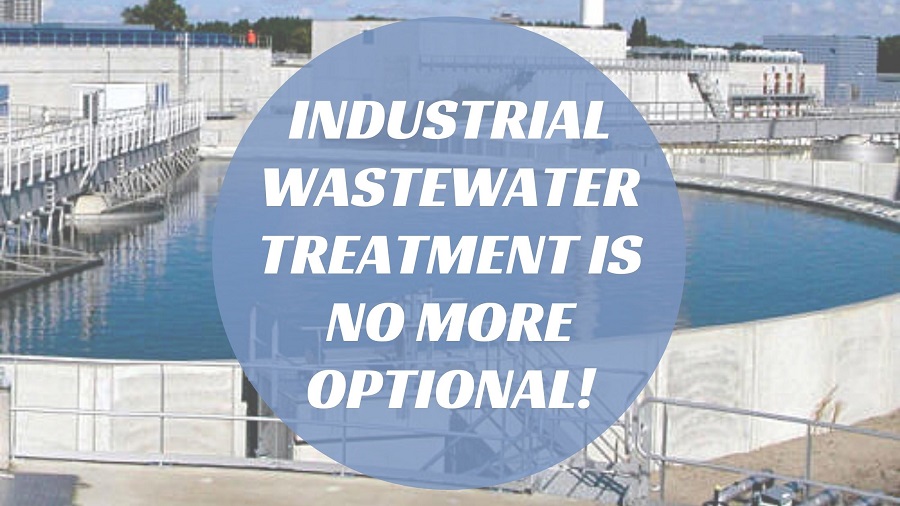Industrial Waste Water Treatment-- Improve Performance with Custom-made Water Treatment Systems
Industrial Waste Water Treatment-- Improve Performance with Custom-made Water Treatment Systems
Blog Article
Secret Techniques in Industrial Waste Water Therapy Processes
The treatment of industrial wastewater is a critical aspect of environmental administration, entailing an array of techniques developed to reduce the effect of impurities. Advancements in technologies such as membrane filtration and advanced oxidation processes provide ingenious services for improving treatment effectiveness.
Physical Treatment Approaches
How efficiently can physical treatment methods deal with the complexities of industrial wastewater? Physical treatment methods play a pivotal role in the preliminary phases of wastewater management, focusing mostly on the elimination of solids and big particulates. Strategies such as purification, flotation protection, and sedimentation are vital for decreasing the concentration of put on hold solids, thereby improving the performance of succeeding treatment processes.
Sedimentation includes the gravitational settling of solids, enabling the splitting up of larger materials from the wastewater. This technique is especially efficient in clearing up water before organic or chemical treatments. Filtering, on the other hand, uses various media to record particle matter, making sure that smaller sized impurities are eliminated. This strategy can be customized to suit various kinds of commercial effluents, generating more clear effluent streams.
Additionally, flotation protection methods, which use air bubbles to raise put on hold solids to the surface for elimination, are efficient in dealing with wastewater with high focus of fats, oils, and greases. In general, physical therapy methods act as an essential primary step in the detailed administration of industrial wastewater, making certain that the load on subsequent therapy stages is decreased and improving overall treatment effectiveness.
Chemical Treatment Methods
While physical treatment techniques lay the foundation for effective wastewater monitoring, chemical treatment techniques are essential for resolving the much more intricate contaminants usually discovered in commercial effluents. These methods use numerous chemical agents to precipitate, counteract, or oxidize unsafe compounds, guaranteeing a more thorough removal of toxins.
One common strategy is coagulation and flocculation, where chemical coagulants such as light weight aluminum sulfate or ferric chloride are included in advertise the aggregation of suspended particles. This process improves solid-liquid splitting up, reducing turbidity and improving water top quality. In addition, neutralization procedures are used to change the pH of wastewater, making use of acids or bases to counteract acidic or alkaline streams, specifically.
Oxidation-reduction reactions play an important duty in derogatory organic contaminants and microorganisms. Chemical oxidants like chlorine, hydrogen, or ozone peroxide are used to damage down complex organic compounds, making them much less unsafe or extra eco-friendly. Moreover, progressed oxidation processes (AOPs) integrate numerous oxidation methods to boost contaminant elimination performance.
Biological Treatment Processes
The performance of wastewater treatment is considerably improved by biological treatment procedures, which harness the all-natural metabolic tasks of microorganisms to disintegrate raw material and get rid of toxins. Industrial Waste Water Treatment. These procedures largely include anaerobic and aerobic digestion, each customized for certain types of wastewater
Aerobic therapy procedures utilize oxygen to support microbial development, advertising the failure of natural toxins into co2 and water. Usual approaches include activated sludge systems, where oygenation containers promote the blending of wastewater with bacteria, and trickling filters, which encourage biofilm advancement on media surface areas.
Alternatively, anaerobic therapy procedures happen in the lack of oxygen, utilizing anaerobic germs to disintegrate raw material, resulting in biogas production, a renewable resource source. Anaerobic digesters are commonly employed in commercial setups for this function, properly decreasing the quantity of sludge while producing beneficial Recommended Site biogas.
The choice of an organic therapy method depends upon wastewater features, therapy goals, and regulative standards. The integration of biological procedures in wastewater treatment not just improves contaminant elimination efficiency however additionally advertises sustainability by lessening chemical use and sustaining resource recuperation.
Advanced Oxidation Processes

Typical AOP techniques consist of Fenton's reagent, ozonation, and photocatalysis. Fenton's reagent, a mix of hydrogen peroxide and ferrous iron, catalyzes the development of view it hydroxyl radicals, making it efficient for dealing with wastewater containing phenolic compounds and various other recalcitrant materials.
AOPs offer a number of benefits, consisting of lowered sludge manufacturing and the capability to treat wastewater with high focus of natural pollutants. The execution of AOPs requires cautious consideration of functional parameters and cost-effectiveness, guaranteeing that these innovative strategies are appropriately integrated right into existing wastewater therapy systems.
Membrane Purification Technologies

Microfiltration works for getting rid of put on hold germs and solids, while ultrafiltration targets smaller organic molecules and infections. Nanofiltration links the gap between ultrafiltration and reverse osmosis, properly getting rid of natural substances and divalent ions. Reverse osmosis supplies the highest degree of filtration, made use of mainly for desalination and getting rid of mono-valent ions.
Membrane layer modern technologies use numerous advantages, including reduced power intake compared to standard treatment techniques, modular style for scalability, and the capacity for water recovery and reuse. Nonetheless, obstacles such as membrane layer fouling and the requirement for regular maintenance must be dealt with to make sure system efficacy. Generally, membrane layer filtration modern technologies stand for a vital check these guys out element of contemporary commercial wastewater treatment techniques, advertising sustainability and source preservation in water monitoring.
Verdict
To conclude, commercial wastewater therapy uses a varied array of methods, consisting of physical, chemical, organic, and progressed approaches. Each method plays a crucial function in properly resolving different contaminants, enhancing water top quality, and promoting resource sustainability. The combination of these strategies fosters a comprehensive treatment strategy, guaranteeing that commercial effluents meet regulatory standards while decreasing environmental effect. Proceeded improvements in these methods will additionally enhance the performance and effectiveness of wastewater treatment processes in industrial settings.
The treatment of commercial wastewater is a crucial facet of ecological administration, including an array of methods developed to reduce the impact of pollutants.Exactly how effectively can physical therapy methods deal with the intricacies of commercial wastewater?Advanced oxidation procedures (AOPs) stand for a cutting-edge technique in industrial wastewater treatment, made to efficiently deteriorate organic pollutants that are frequently immune to conventional therapy methods (Industrial Waste Water Treatment).In conclusion, industrial wastewater therapy utilizes a varied array of techniques, consisting of physical, chemical, organic, and advanced methods. Continued advancements in these techniques will certainly even more improve the effectiveness and efficiency of wastewater therapy procedures in commercial setups
Report this page